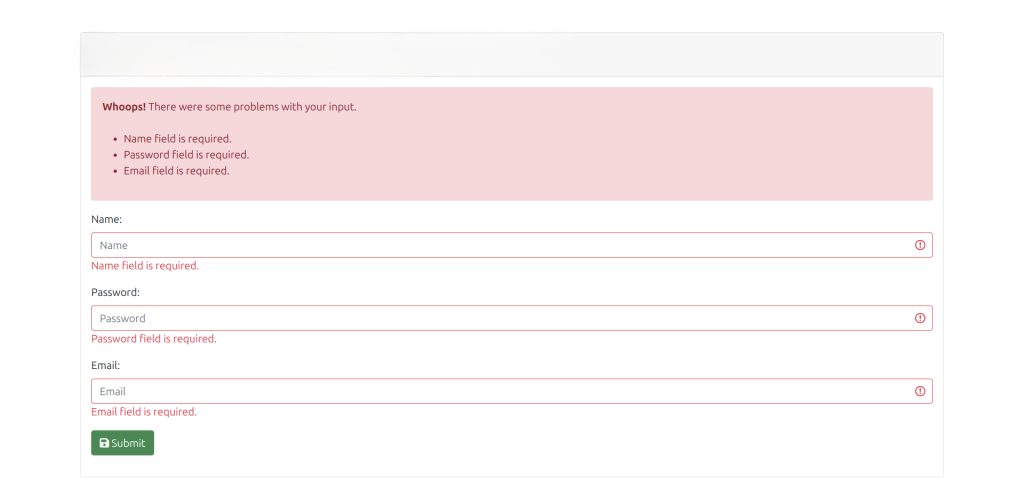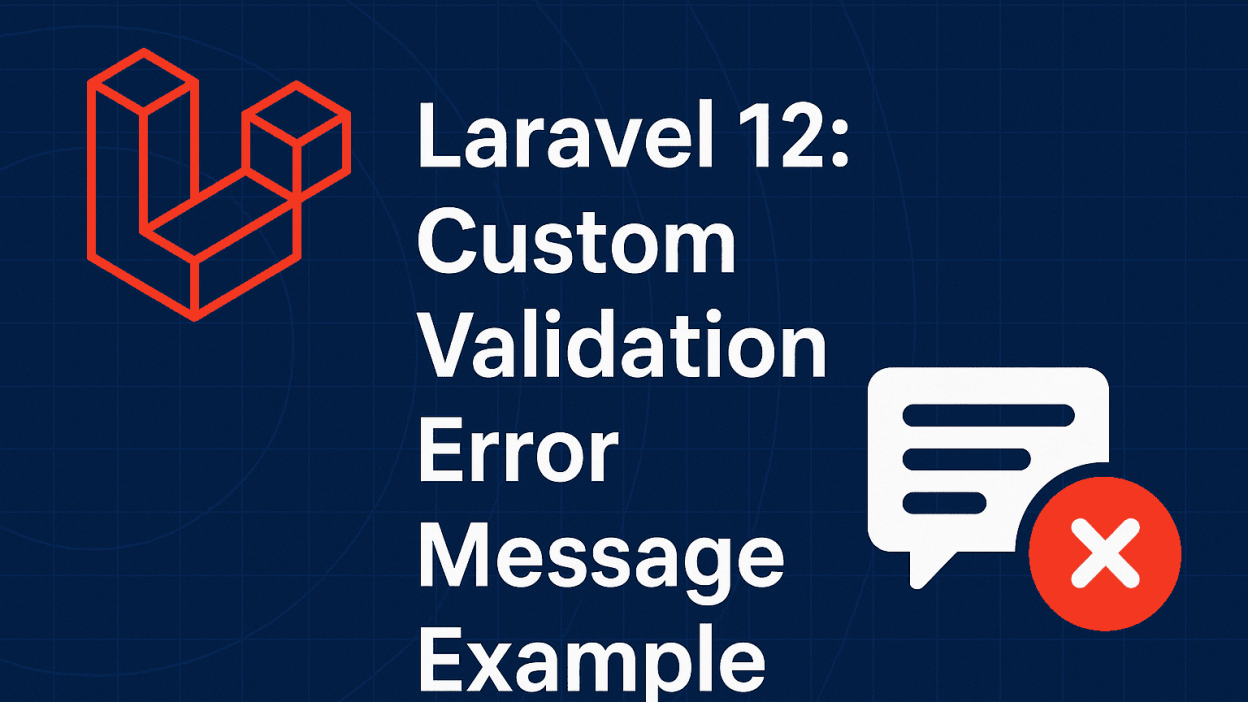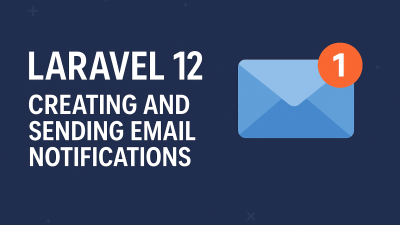In this tutorial, we’ll demonstrate how to implement custom validation error messages in a Laravel 12 application.
Laravel provides a convenient Request object for form validation. We’ll use the validate() method to define validation rules and custom error messages, then display them using the $errors variable. Follow this step-by-step guide to set up form validation in Laravel 12.
Steps to Implement Form Validation in Laravel 12
Step 1: Install Laravel 12
(Skip this step if you already have a Laravel project.)
Run the following command to create a new Laravel project:
composer create-project laravel/laravel example-appStep 2: Create a Controller
We’ll create a FormController with two methods:
- create() → Displays the form
- store() → Handles form submission and validation
Run the command:
php artisan make:controller FormControllerUpdate the controller with the following code:
app/Http/Controllers/FormController.php
<?php
namespace App\Http\Controllers;
use Illuminate\Http\Request;
use App\Models\User;
use Illuminate\View\View;
use Illuminate\Http\RedirectResponse;
class FormController extends Controller
{
/**
* Display the user creation form.
*/
public function create(): View
{
return view('createUser');
}
/**
* Store a new user with validation.
*/
public function store(Request $request): RedirectResponse
{
$validatedData = $request->validate([
'name' => 'required',
'password' => 'required|min:5',
'email' => 'required|email|unique:users'
], [
'name.required' => 'The name field is required.',
'password.required' => 'The password field is required.',
'email.required' => 'The email field is required.',
'email.email' => 'The email must be a valid address.'
]);
$validatedData['password'] = bcrypt($validatedData['password']);
User::create($validatedData);
return back()->with('success', 'User created successfully!');
}
}Step 3: Define Routes
Add the following routes in routes/web.php:
<?php
use Illuminate\Support\Facades\Route;
use App\Http\Controllers\FormController;
Route::get('users/create', [FormController::class, 'create']);
Route::post('users/create', [FormController::class, 'store'])->name('users.store');Step 4: Create the Blade View
We’ll create a Bootstrap-styled form with three different ways to display validation errors.
resources/views/createUser.blade.php
<!DOCTYPE html>
<html>
<head>
<title>Laravel 12 Form Validation Example</title>
<link href="https://cdn.jsdelivr.net/npm/bootstrap@5.0.2/dist/css/bootstrap.min.css" rel="stylesheet">
<link rel="stylesheet" href="https://cdnjs.cloudflare.com/ajax/libs/font-awesome/6.5.1/css/all.min.css" />
</head>
<body>
<div class="container">
<div class="card mt-5">
<h3 class="card-header p-3">
<i class="fa fa-star"></i> Laravel 12 Form Validation Example
</h3>
<div class="card-body">
<!-- Success Message -->
@session('success')
<div class="alert alert-success">
{{ $value }}
</div>
@endsession
<!-- Method 1: Display All Errors -->
@if ($errors->any())
<div class="alert alert-danger">
<strong>Error!</strong> Please fix the following:
<ul>
@foreach ($errors->all() as $error)
<li>{{ $error }}</li>
@endforeach
</ul>
</div>
@endif
<form method="POST" action="{{ route('users.store') }}">
@csrf
<!-- Name Field -->
<div class="mb-3">
<label class="form-label">Name:</label>
<input
type="text"
name="name"
class="form-control @error('name') is-invalid @enderror"
placeholder="Enter name">
@error('name')
<span class="text-danger">{{ $message }}</span>
@enderror
</div>
<!-- Password Field -->
<div class="mb-3">
<label class="form-label">Password:</label>
<input
type="password"
name="password"
class="form-control @error('password') is-invalid @enderror"
placeholder="Password (min: 5 chars)">
@if ($errors->has('password'))
<span class="text-danger">{{ $errors->first('password') }}</span>
@endif
</div>
<!-- Email Field -->
<div class="mb-3">
<label class="form-label">Email:</label>
<input
type="email"
name="email"
class="form-control @error('email') is-invalid @enderror"
placeholder="Enter email">
@error('email')
<span class="text-danger">{{ $message }}</span>
@enderror
</div>
<button type="submit" class="btn btn-success">
<i class="fa fa-save"></i> Submit
</button>
</form>
</div>
</div>
</div>
</body>
</html>Step 5: Run the Application
Start the Laravel development server:
php artisan serveVisit the form in your browser:
🔗 http://localhost:8000/users/create




